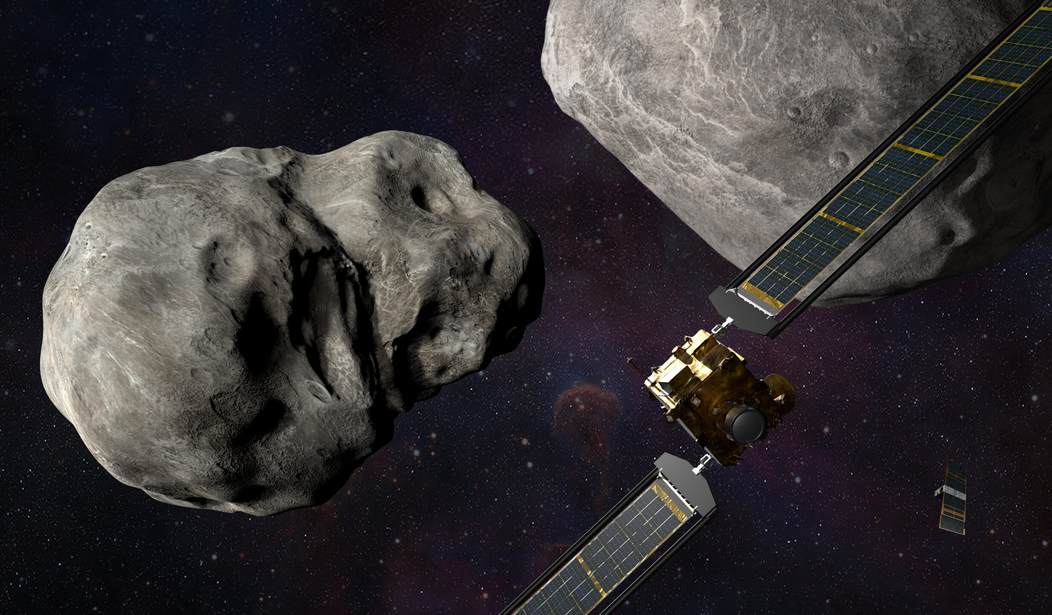NASA’s Double Asteroid Redirection Test (DART) planetary defense mission successfully made impact with the small asteroid Dimorphos, located about 7 million miles from Earth. The DART spacecraft’s mission was to bump Dimorphos into a tighter orbit around Didymos, its companion asteroid.
This video starts at the last few seconds before impact:
DART was the first test of a defense system designed to protect the planet if an asteroid or other object threatens to collide with Earth. NASA worked in conjunction with the Johns Hopkins Applied Physics Laboratory and the European Space Agency to develop the program, and scientists chose Dimorphos because it doesn’t threaten Earth.
NASA described the DART mission objectives this way:
- Demonstrate a kinetic impact with Dimorphos.
- Change the binary orbital period of Dimorphos.
- Use ground-based telescope observations to measure Dimorphos’ period change before and after impact.
- Measure the effects of the impact and resulting ejecta on Dimorphos.
In addition to the European and American cooperation, astronomers across the globe will study Dimorphos over the next few weeks to see if DART was successful. The mission truly is a worldwide effort.
“Planetary defense is an international mission,” said planetary scientist Dr. Nancy Chabot. “We’re all in this together.” She added that astronomers will study Dimorphos’ orbit over the next few weeks to monitor changes.
“Humanity 1, Asteroid 0,” quipped NASA Communications Strategist Tahira Allen, who anchored the coverage on NASA TV.
Related: Here’s What I Learned at the Press Briefing for DART: NASA’s Planetary Defense Mission
Here’s a video explaining the objective of the DART mission:
Dimorphos is a small asteroid at 525 feet in diameter, about as tall as the Washington Monument, while the DART spacecraft is about the size of a refrigerator. So how does an object so small make a difference in the trajectory of an object so large? Dr. Lucas Paganini of the DART Coordination Office said it’s all about momentum. DART came at Dimoprhos at a high enough speed that it was effective even as it destroyed itself in the process.
But what DART didn’t do was destroy Dimorphos.
“You don’t want to destroy an object. You want to move it all in one piece,” said Johns Hopkins University astronomer Andy Rivkin. In the event of an asteroid or other item that could affect Earth, the advantage of simply bumping an asteroid rather than blowing it up is that redirecting the object prevents smaller pieces from traveling toward us.
Even with the size of Dimorphos, it’s the smallest asteroid that scientists have studied, and its distance from Earth made Dimorphos a total mystery until DART’s impact. In fact, the scientists involved in the DART mission are excited about what the photographs from the spacecraft will tell us about the asteroid’s makeup.
But the most important objective of DART is determining whether we can nudge an object onto a new path, which is a game changer in terms of protecting Earth not if, but when an object moves toward the planet. If DART has proven successful, it can potentially save billions of lives. And that’s something to be excited about.










Join the conversation as a VIP Member